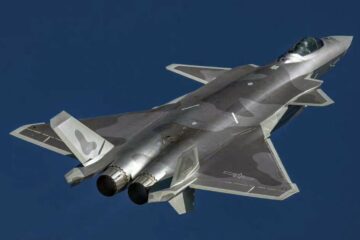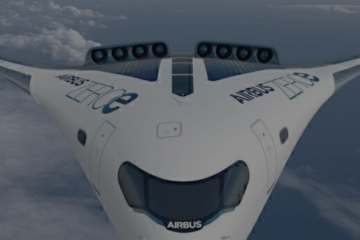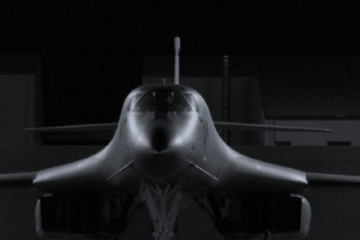Last Updated on 23/06/2022 by AIR OPERATIONS
These are our picks for a tumultuous last market week. As usual, all content is external and as such is not covered under AIR Privacy policy except for our comments.
We quote former President Bill Clinton’s strategy adviser, James Carville who famously declared in 1992 that “It’s the economy, stupid”. A slogan that set the tone during the 1992 presidential campaign.
Economics
A very tough market week. Fed rate increase in response to a market downturn that was “written” in the sky. We are entering a period of market and economic uncertainty that is incompatible with younger population mindsets and spending habits. The FT analyzes the true health of the US economy:
The much hoped-for “soft landing”, in which inflation abates without significantly higher unemployment, is all but ruled out. We think the likelihood of a recession, defined crudely as a few quarters of negative growth, is very high, given the Fed’s posture. The central bank is all but determined to make a recession happen, but its depth remains an open question.
We view the US economy has strong foundationally but again, currently mismanaged in a post pandemic era of excessive liquidity and supply chain disruption. While we will not analyze President Putin’s speech at the St Petersburg Economic Conference today, we only agree with him when he says ““Nothing will be as it used to be in global politics.” This decoupling will have consequential effects on trade relations between emerging markets and the re-formed Russo-Chinese block and the US led block. The Sino-Russian block stability variable will not be the health of the Russian economy in this case (we believe that Russia can operate relatively self sufficiently, albeit at mediocre growth rates), but China. The PRC will fundamentally be the geopolitical guarantor of the economic strength of that block. While we believe that the decoupling of the Chinese economy from the US’ will not be as extensive as Russia’s, there will be an increasing number of areas, namely in the area of financial instruments, that will be expanded to guarantee trade independence with the block and its BRICS partners.
Here is link to How fast is the US economy slowing?
Aircraft OEMs
Boeing is warming up to the concept of Open Rotor engines developed by GE and Safran:
Boeing’s vice president of product development, however, cautiously did so on the sidelines of a briefing this week on its flying technology testbed.
“Any tool that helps us improve environmental performance is something worth looking at,” Mike Sinnett, Boeing’s vice president of product development, told reporters.
“The open-rotor of today is something that is very different than 20 years ago. There are things about that engine that are very interesting. And I would not say that we would never put an open-rotor on an airplane,” Sinnett said.
While we believe that Safran, RR and GE will not be ready with a new 40klbs plus engine for a new midmarket aircraft until 2029. The open rotor technology current TRL level makes it a potential alternative for the 737MAX replacement.
Read more: Never say never’: Boeing open to GE-Safran’s new engine concept
Supply Chain
Stan Deal, the President and CEO of Boeing Commercial Aircraft discusses supply chain issues on the sidelines of the IATA summit in Qatar.
His organization is continuously facing supply chain disruptions that will take time to correct, especially for the anticipated rate 42 with the MAX program later next year.
“Our supply chain is going to be a key factor to rate ramp-up and I think that is an industry view, not just a Boeing view,
We’ve seen shortages on wires, we have overcome that; we’ve seen connector issues come through; we’ve had to pause for a period in late April, early May on the [7]37, we are catching up on that now.
”We are all watching the engine manufacturers as they ramp up because a lot of demand is common point, through the supply chain of the engine manufacturers, so that’s a big watch item. We are watching electronic components for the obvious chip shortage and the same issue of human capital coming back in.
It is expected that Boeing, and Airbus, will face additional disruptions throughout 2022 and 2023. Serious delays are already plaguing one of Airbus’ engine supplier and Boeing is exposed to delays with avionics components and eventually materials later this year.
Geopolitics
Professor John Mearsheimer of the University of Chicago needs no introduction. If you are not familiar with his work, his bio is available here from the U of C.
He leads what has been characterized as the leader of the school of realism. The link below is one of his recent lecture at the Robert Schuman Centre in Florence, ItaIy.
His points are very well articulated, especially his range of scenario presented at the end of his presentation
Where he does not clearly articulate his thoughts is in the interpretation of the mindset and psychology of President Putin. While he makes references of the “wins” for President Putin, he does not go beyond regional thinking and presents only a set of regional platitudes. He ought to perhaps have elaborated about the intel behind Russia’s decisions and its desired psyops effect targeting the stability of Western EU/US societies, the integrity of the EU and the long term effects on NATO cohesion and the overall geopolitical balance of power. Putin is probably seeking as much the neutralization of the Ukraine as he does the overall weakening of so-called liberal societies. This is a decade long process that will reshape the respective roles of China and the United States from 2030.
Technology
A piece from the MIT Technology reviews raises very interesting points about the growth of commercial aviation and emission targets by 2050
In order to make up the rest of the emissions cuts needed to stay below 2 °C by 2050, airlines will need to improve both technical efficiency (for example, how much fuel a plane burns per mile) and operational efficiency (how full flights are). And demand will likely need to slow, either because people travel less or because they shift to other modes of transport, like high-speed trains.
Keeping emissions low enough to stay under 2 °C of warming would mean cutting aviation’s annual emissions in 2050 to about half of currently projected levels—a daunting task
The emerging issues from this short piece are simple in our opinion:
- More short range, point to point service, using hybrid/electrical or hydrogen power will be needed, thus relieving hub pressures
- HUBs and secondary airports aircraft size will need to grow in order to reduce emissions and carry more passengers and thus maintain market growth.
The piece can be found here: The aviation industry can hit its emissions goals, but it needs new fuels
Commercial Aviation
We are always happy to see an A380 and the current airline market environment is perhaps propitious to the return of the whale jet as it supports current schedules and tight staff availability ahead of the summer travel.
Having taken that hit, they can fly the jet without expensive depreciation charges – though the price of fuel devoured by the plane’s four engines remains a huge headache.
Qantas took a A$1.43 billion ($995 million) charge in 2020, mainly on the then-grounded A380, but is now bringing back 10 out of 12.
The A380 has also won a reprieve in part because airlines do not yet have enough demand to resume multiple flights on routes like Dubai-London, Singapore-Mumbai and Sydney-Los Angeles.
and Sir Tim Clark to add:
“Everybody’s been struggling with capacity. I’ve watched it all; people saying that the trend is over,”
“If you want to do that you will regret it,” “And now what happens is you are having to reactivate A380s”.
Clearly, the A380 has a role to play. However, it remains to be seen how (un)economical the aircraft can remain and how long this second coming can last.
Read here: Return of the superjumbo: A380 makes comeback despite high oil prices
Defense
While the Air Force may have to keep older F-22s in service for longer (read: capability gap in a two theater engagement scenario for another decade), NGAD continues to move forward.
General Brown described the NGAD, or at least, the central fighter component within what’s expected to be a ‘system of systems,’ as an aircraft with a primary air dominance mission. This fits in with its broad brief to ultimately replace the Air Force’s relatively small fleet of F-22A Raptor stealth fighters, which are now being slated for retirement in the coming decade. However, the Air Force boss also wants the fighter to have some “multirole” functions, specifically, the ability to attack targets on the ground, “to ensure, one, that it can survive, but also to provide options for our air component commanders and for the Joint Force.
Task duplication with F-35 you would say and perhaps you might be right. Our interpretation is that F-35 will continue to suffer from range issues that will affect its deployment and intra theater supportability. NGAD will need to be able to operate from airbases in the central and Southern Pacific and have the range/payload to engage targets in the South China Sea without tanker support in the outbound leg. The same applies to an eastern European engagement. US based NGAD should be able to operate from Lajes, Keflavik and St Johns without range/payload limitations due to area denial issues.
Read: The Air Force Might Make Two Distinct Versions Of Its Next Multirole Stealth Fighter



